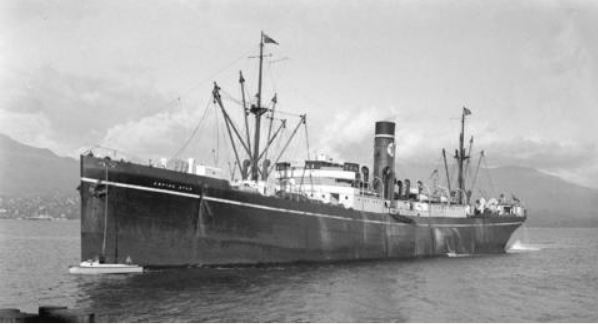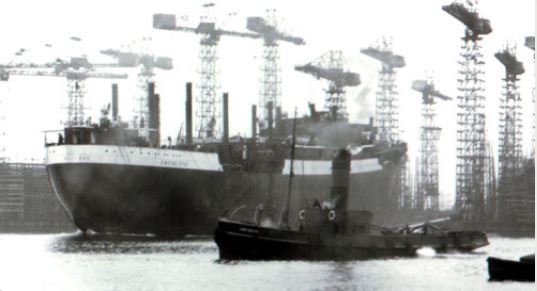SS Empire Star
From Our Contribution
Contents
Remarks
Built for the Blue Star Line to ship frozen meat from Australia and New Zealand to the UK via South Africa. From late 1940 her route was east from Australia through the Pacific and Panama Canal. On 7 Mar 1940 she collided almost head on with SS Kairanga at the entrance to Sydney harbour. Damaged she was not operational again until 1 Apr 1940.
On 19 Jan 1942 Empire Star left Bombay for Singapore as part of Convoy BM 11. By the time the convoy reached Singapore on 29 Jan 1942 Malaya was lost, and only the narrow Straits of Johor lay between Japanese forces and the island of Singapore. By 11 February Empire Star had loaded RAF equipment and stores and had embarked with what the Master, Selwyn Capon, estimated were more than 2,160 people, including 133 Australian Army nurses with some from the 2/13th Australian General Hospital.
In the early hours of 12 Feb 1942 Empire Star and SS Gorgon left Singapore escorted by the cruiser HMS Durban and anti-submarine vessel Kedah. At 9:10am in the Durian Strait south of Singapore, six Japanese dive-bombers attacked the convoy. Anti-aircraft fire shot down one aircraft and damaged another, which broke off from the attack. Three bombs hit Empire Star, killing 14 people and wounding 17. She was set on fire in three places but her firefighting equipment was not disabled. One of Empire Star's four lifeboats was damaged and in this or a subsequent attack one of the ship's anti-aircraft guns was destroyed. Firefighting parties extinguished all fires, and the Australian nurses tended the wounded. As aircraft machine-gunned the ship two nurses, Margaret Anderson and Veronica ("Vera") Torney, threw themselves upon wounded soldiers to protect them from further injury.
At intervals over the next four hours as many as 47 Japanese twin-engine bombers attacked from altitudes of 2,100 to 3,000 metres, but the ship evaded many bombs by what was recorded as "violent evasive action". On 13 Feb 1942 those killed aboard Empire Star were buried at sea. That same day the ship and her evacuees safely reached Batavia in the Dutch East Indies where she underwent emergency repairs and 48 hours later continued to Fremantle, where she arrived on 23 Feb 1942.
From Fremantle the ship journeyed via eastern states ports to New Zealand and via the US to Liverpool in the UK. On 20 Oct 1942 she departed Liverpool for Cape Town with cargo and aircraft. On 23 Oct 1942 while north of the Azores and in bad weather that had forced her to discontinue zig zagging, German U Boat U-615 fired a spread of 4 torpedos at her, with two of them striking her. While one was a dud, the other exploded into the engine room causing the ship to flood and list heavily. Four crew were killed, and while 61 crew and passengers were subsequently rescued from a life boat, another life boat with 32 aboard including the Captain and six passengers, perished.
Armament carried included: one 4-inch gun; one 12-pounder gun; two Oerlikon 20 mm cannons; five machine guns
Battle Honours
- Evacuation of Singapore 1942

